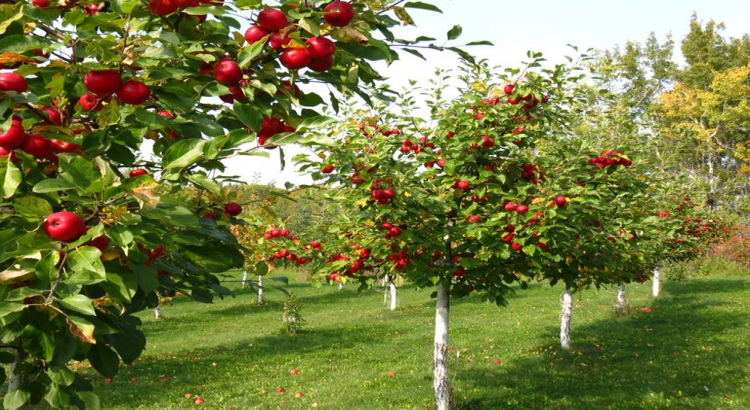The idea of having an orchard summon up pictures of vast amounts of land with row and rows of trees. While this is usually the case for those that are creating a business out of growing fruit, it does not necessarily mean that everyone should go down that route. Since not everyone can dedicate a large amount of space for growing such a large orchard, there are other ways to grow fruit. One such way is creating a small orchard right in your own backyard.
Many times people think that growing fruit will be a challenging task. But growing an orchard is not a difficult task and your payoff will be a vast amount of fruit. From just one tree, you can expect to harvest lots of fruits for the next twenty years. Having your own orchard means that you will be able to make yours an organic orchard. This means that you will no longer worry about your fruit being covered in pesticides. Continue reading to find out more…
Step-by-Step Guide to Create your very Own Backyard Orchard
-
Selecting Trees
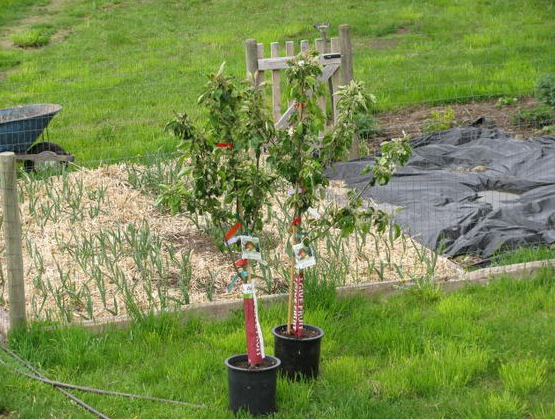
One of the first things you will want to take into consideration is which types of tree you want to plant. When it comes to a backyard an orchard dwarf or semi-dwarf trees are the ones that you should look at. These small fruit trees will be easier to manage than the standard trees. Plus, using a smaller variation of fruit tree means that you do not need to have a large amount of property to plant them.
Dwarf fruit trees will only grow to eight feet in diameter. Pruning them will not be a difficult task as they do not get very tall. While many people think that these small trees will produce small fruit, that is not true. The fruit that comes from these dwarf trees will be normal sized, but it the crop size will be smaller than the standard trees.
Semi-dwarf trees will need a little more space than the dwarf trees. These will grow to 15 feet in diameter, and get to be around sixteen feet in height. On the other hand, the standard orchard tree will be twenty-five – thirty feet. One of the greatest perks about the semi-dwarf trees is they only have to be cut down once a year. These trees will also create a large amount of fruit every year, which means that these trees are able to yield more fruit than their dwarf counterparts do.
Picking out your fruit tree should be based on your needs and how much effort you are willing to put into the care and maintenance of these trees. For example, the maintenance of orchard will be easy handle if you choose a variety of fruit trees that will do okay your local environment. While exotic fruit trees might be fun at first, they could be very difficult to grow.
Different types of fruit trees will thrive in different soil types. Apple and pears are able to tolerate a dry soil, but you will need a drainage put in place. While peach trees, on the other hand, will develop blight if they get a large amount of rain. Which means that these trees should be planted in a more protected area. Take some time and do a little bit of research on which type of fruit trees will be able to flourish the best in your area.
-
Selecting a Planting Site
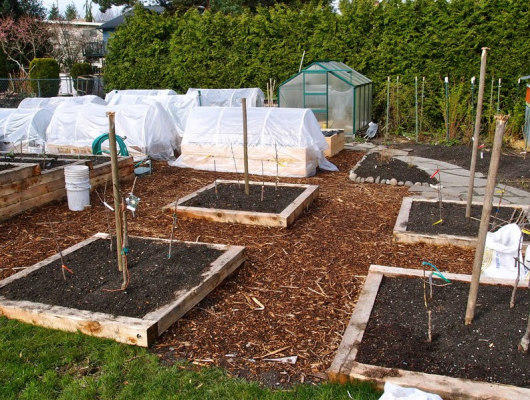
When you are picking the site for your orchard, there are several things that you should think about before you get started. One of the first things you will want to decide on, is how much space you are willingly dedicating to your orchard. This will later dictate how many plants you will be able to grow in that specific area of your garden or orchard. For the majority of plants, you will need to find a location that comes with good drainage. In order to test this out , you should create a one-foot hole in the area where you are wanting your orchard to go. Then pour some water into the hole, and let it drain. If the water longer than three hours, you will need to pick a new place for your trees. Another route you can take if the spot you have picked takes forever to drain is to take the time to build a berm, mound or a raised bed. You can also install a French drainage system. A French drainage system is a trench that is filled with rocks or gravel that helps the water drain away from the tree planting area. This can be an appealing option as it will add a decoration element in your backyard orchard.
-
Picking the Right Trees
Once, you know which size and type of tree you are going to grow, it is now time to actually go out and select your trees. When picking out the right trees there are several things that you should look for. Some of the things that you should for includes:
- Strong and straight stems. If a tree is already leaning you will need to correct it by staking it correctly, otherwise you will have problems later on. But it is easier just to get non-leaning trees, right from the start.
- Look for a defined leader branch. This is a branch that grows straight from the trunk. Having a leader branch will make it easier for pruning the tree, later on.
- Evenly growing branches. Having limbs that span evenly on each side of the leader branch will create a fuller tree.
- Avoid low branches. Trees that have low branches could potentially get in the way when you are doing normal lawn care and maintenance. In some cases, having these low branches will attract bugs and other pests to your little backyard orchard.
- Know how they pollinate. Some are self-pollinating, while others will need some help.
- When transporting the trees home, make sure that you keep the roots covered and damp. By doing this you are making sure that your little saplings will be avoiding shock.
-
Planting Trees
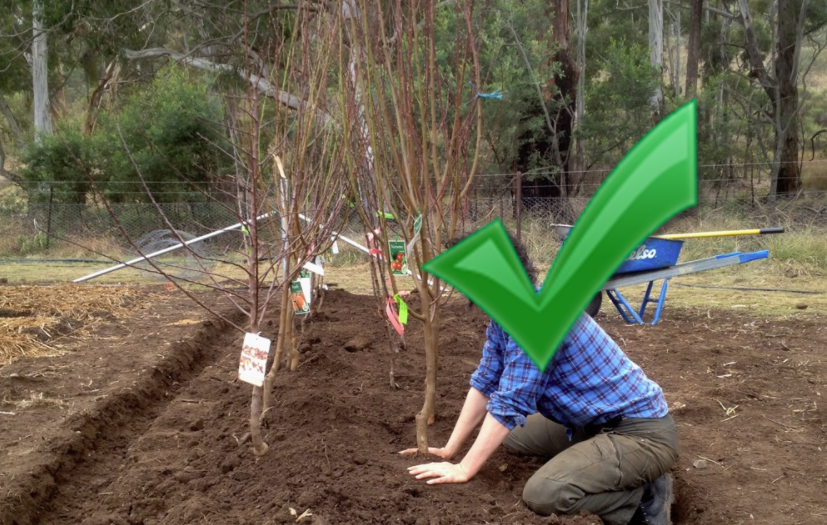
With your saplings all picked out it now time to plant them. First off you will want to dig a space that is about eighteen inches deep. In some cases you might have to dig the hole deeper, to make sure that all of the roots will be covered. You should then break up the dirt on the sides and bottom of the hole, before putting water into the hole. Give the water some drain time and then put a good thick layer of compost at the bottom. Once the layer of compost is put down, you will then put enough dirt back into the hole to create a small mound.
Now, it is time to actually put the tree into the ground. You are going to take the root ball and place it on top of the mound that you have created. Before you begin to put the rest of the soil back into the hole, make sure that the graft line is above ground level. For those that do not know, the graft line is the slight bulge that is located near the base of the trunk. This is where the bud has been grafted onto the rootstock, which created the tree you are planting. When you have made sure the graft line is not being covered it is time to fill in and lightly compress the soil. Be sure to create a one- two-inch mound around the tree, before you surround the trunk with mulch. Once the tree has been planted, you might have to stake it down. Firmly staking the tree into the ground will keep the tree from flopping around in the weather. If you live in a southwestern region, you may want to paint the tree trunk. Painting a tree trunk with interior white latex paint that has been diluted in a 1-1 ratio with water can help protect the newly planted tree from the sun. Paint your tree from the ground up, so help prevent the little sapling from being sunburned.
-High-Density Planting
If you are limited on space, you can choose to plant multiple trees in the same hole. By doing this you will limit the tree size by creating a competition between the trees for water, light, and nutrients. This system will work perfectly for backyard orchards since the goal is to keep the trees as small as possible. You will have to be careful in this endeavor because you still want to provide the orchard will just enough room for them to grow.
General First-Year Planting Tips:
- Fruit trees should be planted 18-24 inches apart.
- After you have planted them, cut the trees down, so they are all the same size.
- In the spring and late summer cut the new growth back by half.
- If you are planting more than one variety, make sure that no variety is dominating or shading out the other trees.
- Make sure that there is a good layer of mulch around the trees. This will help the tree with water retention.
- You do not need a watering routine for your new fruit tree unless the region that you live in is going through a dry spell.
-
Pollinating Trees
If you trees are not being properly pollinated, then they will not bear any fruit. There are several ways you can improve the chances of your saplings being pollinated. This includes:
- Attracting bees. Since bees are natural pollinators, you could grow flowers that are known to attract bees. This will increase the number of bees that come visit your orchard, which will improve the chances of your trees being pollinated.
- Avoid insecticides. Using insecticides could kill off all your pollinators, so it is best to avoid these as much as possible.
- Plant different varieties of the same tree. This will help create a successful cross-pollination, which can even be beneficial for those self-pollinating trees.
-
Pruning Time
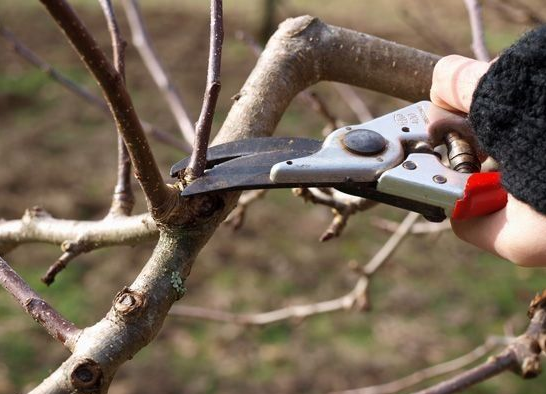
Since pruning can be a tiresome task, many people will choose to overlook this part of taking care of their trees. Skipping pruning sessions are not something that should be done, as it could limit the amount of fruit that you will be able to harvest in the fall. But if you prune down your fruit orchard at least once a year you will not only get more fruit, but the tree will continue to grow for many more years.
The best time for tree pruning is right before it starts to develop in the springtime. The goal of pruning should be to create the best tree shape that will also allow a large amount of light to hit the leaves of the trees. You should also remove any dead or diseased branches. If you are new to orchard pruning, it might be a good to hire a professional tree pruner the first time around. Or if you are a do-it-yourselfer, you could talk to an experienced grower or a local nursery worker, to get some tips on pruning.
General Orchard Upkeep Tips
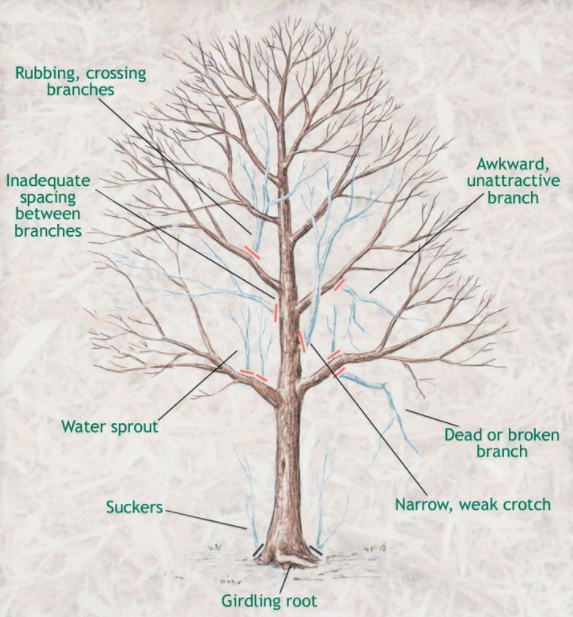
Choosing to treat your orchard well will mean that you will get a large harvest for many years to come. Here are some extra tips that can help make your tree even more productive:
- Make sure that the graft line is exposed. In some cases, when the graft line gets covered up by the ground you might get a surprise at harvesting time. Usually, when the graft is created, there is a different plant placed on the rootstock. So, when the graft line gets covered the tree could change back to what the original roots were. Which means that you could be expecting apples, and end up with peaches.
- If you have planted apples and peaches, make sure that you thin out the early fruit. By doing this you are ensuring that the tree will have enough energy to create larger fruits later in the season.
- Deal with pest when you first spot them.
- Make sure that you water your during the dry seasons. Water your tree thoroughly every two weeks.
- When the leaves begin to fall off the tree, make sure that you are raking them up.
Well that’s about it for this post, remember to comment or email us for any more questions.
Good luck and happy gardening!
